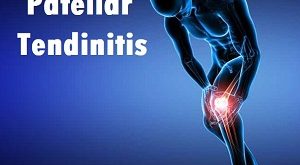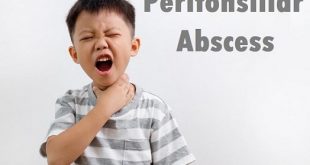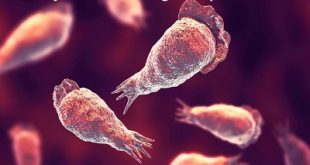Introduction
Poliomyelitis, commonly known as polio, is an infectious viral disease caused by the genus Enterovirus from the Picornaviridae family. Poliomyelitis is a paralytic disease resulting from the destruction of motor neurons in the central nervous system and can lead to partial or full paralysis.
Structure of polio virus
The poliovirus is a small (22 to 33 nm), single-stranded (approximately 7,500 nucelotides), and positive sense RNA virus enclosed in a non-enveloped icosahedral protein capsid. The virus can survive in an acidic pH environment, like the gastrointestinal tract. There are three serotypes of poliovirus: PV1, PV2, and PV3. Generally, immunity to one serotype does not mean immunity to other serotypes.
Types of poliomyelitis
There are three forms of polio infections: sub-clinical, non-paralytic, and paralytic.
- Sub-clinical: The most common polio infection form is sub-clinical, which accounts for approximately 95 percent of all cases. Sub-clinical infected individuals typically are asymptomatic and does not affect the central nervous system.
- Non-paralytic: This form causes mild symptoms and does not result in paralysis. However, it does affect the central nervous system. This form makes up 1-5 percent of all polio cases.
- Paralytic: Known as the rarest and most serious form of polio, it causes full or partial paralysis in affected individuals. Within this form, there are three types of paralysis that can occur:
- Spinal polio: The virus attacks motor neurons in the spinal cord that causes paralysis in the arms and legs, and breathing problems.
- Bulbar polio: The virus affects the neurons responsible for sight, taste, swallowing, and breathing.
- Bulbospinal polio: The virus causes symptoms of both spinal and bulbar polio.
There is a condition called post-polio syndrome that can occur when an infected person has recovered from poliovirus and symptoms appear 35 years after.
Pathogenesis
The virus enters through the mouth, and primary multiplication of the virus occurs at the site of implantation in the pharynx and gastrointestinal tract. The virus is usually present in the throat and in the stool before the onset of illness. One week after onset there is less virus in the throat, but virus continues to be excreted in the stool for several weeks.
The virus invades local lymphoid tissue, enters the bloodstream, and then may infect cells of the central nervous system. Replication of poliovirus in motor neurons of the anterior horn and brain stem results in cell destruction and causes the typical manifestations of poliomyelitis.
The time from being infected with the virus to developing symptoms of disease (incubation) ranges from 5 – 35 days (average 7 – 14 days). Most people do not develop symptoms.
Historical information
Evidence of polymyelitis can be traced back to Ancient Egypt
1789 – British physician Michael Underwood records the first clinical description
1894 – In Vermont, the first outbreak of polio epidemic in the US occurs, with 132 cases
1908 – Scientists Karl Landsteiner and Erwin Popper are the first to identify a virus as the causative agent of polio through experiments of transmission to a monkey
1916 – Another polio epidemic occurs in the US
1921 – Franklin D. Roosevelt is diagnosed with polio at the age of 39. He inadvertently becomes the face of polio and helped change public perception on the disease.
1930s – Three strains of poliovirus are discovered
1953 – Dr. Jonas Salk and his associates develop an inactivated polio vaccine.
1955-1957 – U.S. polio incidence declines by 85-90 percent.
1979 – The last case of wild type polio in the US reported.
1980s – Post-polio syndrome identified by physicians
1981 – Publication of Poliovirus genome sequence
1999 – Inactivated polio vaccine replaces oral polio vaccine as the recommended form of polio immunization in the US.
Epidemiology
Poliomyelitis occurred worldwide, but is not limited to Asia and African continents. During 2003 the disease was endemic in 6 countries India, Nigeria, Niger, Pakistan, Afghanistan and Egypt. However importations from these endemic countries have been reported recently in other polio free countries and states. The disease is seasonal, with cases starting to increase sharply in June with peaks during July through September. Cases continue to be high in areas with low immunization coverage and poor sanitation.
Causes
Poliomyelitis is a disease caused by infection with the poliovirus. The virus spreads by:
- Direct person-to-person contact
- Contact with infected mucus or phlegm from the nose or mouth
- Contact with infected feces
The virus enters through the mouth and nose, multiplies in the throat and intestinal tract, and then is absorbed and spread through the blood and lymph system.
Who is at risk of getting Poliomyelitis?
As is the case with many other infectious diseases, people who get polio tend to be some of the most vulnerable members of the population. This includes the very young, pregnant women, and those with immune systems that are substantially weakened by other medical conditions.
Anyone who has not been immunized against polio is especially susceptible to contracting the infection.
Additional risk factors for polio include:
- Traveling to places where polio is endemic or widespread, especially Pakistan and Afghanistan
- Living with someone infected with polio
- Having a weak immune system
- Pregnant women are more susceptible to polio, but it does not appear to affect the unborn child
- Working in a laboratory where live poliovirus is kept
Symptoms of Poliomyelitis
Non-paralytic polio symptoms
Non-paralytic polio, also called abortive poliomyelitis, leads to flu-like symptoms that last for a few days or weeks. These include:
- Fever
- Sore throat
- Headache
- Vomiting
- Fatigue
- Back and neck pain
- Arm and leg stiffness
- Muscle tenderness and spasms
- Meningitis – an infection of the membranes surrounding the brain
Paralytic polio symptoms
Symptoms of paralytic polio often start in a similar way to non-paralytic polio, but later progress to more serious symptoms such as:
- A loss of muscle reflexes
- Severe muscle pain and spasms
- Loose or floppy limbs that are often worse on one side of the body
Possible Complications
- Aspiration pneumonia
- Cor pulmonale (a form of heart failure found on the right side of the circulation system)
- Lack of movement
- Lung problems
- Myocarditis
- Paralytic ileus (loss of intestinal function)
- Permanent muscle paralysis, disability, deformity
- Pulmonary edema
- Shock
- Urinary tract infections
Diagnosis of Poliomyelitis
Medical history
Medical history of the patient includes enquiry about exposure to a case of polio. This includes travelling to an area where polio in endemic, direct contact with nasal or mucus secretions of an individual with polio infection.
History or polio vaccination is also important. Inactivated injectable polio vaccine or IPV for example has an effectiveness of around 90% protection from the infection. Individuals who are vaccinated are usually protected from the infection.
Physical examination
This involves a complete checkup of the systems. The respiratory muscles are examined for function as polio affecting spinal cord and brain stem may affect respiratory muscles.
Muscle reflexes are tested. Abnormal reflexes are detected. There may be a stiff neck and stiff muscles of the back. There may be difficulty in bending the neck and difficulty in lifting the head or legs when lying flat on the back.
Acute flaccid paralysis
Acute flaccid paralysis (AFP) is a common clinical manifestation of poliomyelitis. AFP is defined as the sudden onset of flaccid paralysis in one or more limbs.
AFP is also caused by Guillain-Barré syndrome and transverse myelitis. AFP is monitored closely worldwide to detect stray cases of polio due to wild virus subtypes.
Laboratory diagnosis
Cerebrospinal fluid examination
The Cerebrospinal fluid bathes the spinal cord and the brain. This CSF is tested using a lumbar puncture. Lumbar puncture involves insertion of a long thin needle between the vertebrae. This draws out a small amount of CSF that is sent to the laboratory for evaluation.
Routine CSF examination includes assessment of cells (white blood cells, blood etc.) and levels of sugar and other chemicals in the CSF. Typically there are 10 to 200 cells/mm3 and there may be a mildly elevated protein content in CSF from 40 to 50 mg/100 ml.
Throat washing
Throat washing is taken and assessed for the virus. The washings are incubated at a favourable atmosphere in a culture media.
If the culture is positive for the virus it may be detected under microscope. Stool samples are also examined for polio virus. Isolation of virus from the cerebrospinal fluid (CSF) is diagnostic but is rarely possible.
Blood tests
Blood is tested for antibodies for polio virus. Antibodies are molecules that are produced by the body against an invading virus or bacteria.
When a person is infected with polio virus, special tests can detect the levels of polio virus specific antibodies and confirm the diagnosis.
Fingerprinting the polio virus
Once the polio virus is isolated it is tested by a special test called oligonucleotide mapping (fingerprinting) or genomic sequencing. This is essentially looking at the genetic sequence of the virus to detect if the origin of the virus is “wild type” or “vaccine like”.
Wild type virus naturally occurs in the environment and may occur as 3 subtypes – P1, P2 and P3. Vaccine like virus is derived after a spontaneous mutation of the genes of the virus in the polio vaccine.
Treatments and drugs
Because no cure for polio exists, the focus is on increasing comfort, speeding recovery and preventing complications. Supportive treatments include:
- Bed rest
- Pain relievers
- Portable ventilators to assist breathing
- Moderate exercise (physical therapy) to prevent deformity and loss of muscle function
- A nutritious diet
People with major poliomyelitis may require additional treatments, including:
Physical therapy – Therapy helps to minimize damage to paralyzed muscles and to help people regain mobility as the acute illness resolves. Treatment for paralysis depends on which muscles are affected.
Measures to prevent urinary tract infections – If the bladder muscles do not contract normally, the bladder may not empty completely. This can lead to urinary infections. Using catheters to empty the bladder may be necessary, and long-term use of antibiotics is recommended in some cases.
Mechanical breathing support – When polio weakens the chest muscles so much that they cannot move the lungs (cannot breathe), people can be kept alive by placing a tube into their windpipe (the trachea). This tube is placed through an opening in the neck, called a tracheostomy. Breathing is performed by a machine called a ventilator that moves air in and out of the lungs. A catheter attached to a suction motor can remove excessive mucus through the tracheostomy tube.
Assistive devices
- Splint: A splint is a device designed to keep a part of the body in a normal position or a symmetrical posture. A splint may be used to facilitate and assist movement, support weak muscles and avoid contractures and deformities.
- Orthosis: An orthosis provides support for a weak body part and thus allows a person to function better, e.g. to walk. If poliomyelitis has left a child with permanent muscle weakness (paralysis), an orthosis will be needed for life. For example, if the thigh muscles (quadriceps) are too weak to straighten the child’s knee, using an orthosis may allow the child to walk.
- Crutches and walkers: Crutches and walkers are used by children to support themselves during standing and walking. Walkers are very helpful for children with poor balance and weak muscles.
- Wheelchair: For a few children with poliomyelitis, wheelchairs can be an important component of their rehabilitation. Wheelchairs are usually prescribed for children who are unable to walk even with assistive devices.
Crutches
Symptoms of fever, headache, back, and neck and muscle pain are relieved by using pain relievers and muscle relaxant medications. Usually NSAIDs like Ibuprofen, Diclofenac and Acetaminofen are preferred.
Aspirin is not used in children with viral infections for fear of Reye’s syndrome that causes severe irreversible liver damage.
- For pain, spasm and stiffness in the muscles moist heat using warm towels and heating pads may be used.
- Patients who have difficulty breathing or have paralysis of respiratory muscles may need breathing support using artificial support like ventilators.
- Those with urinary tract infections need antibiotics. There may be problems in urinating due to difficulty in beginning urinating. This may lead to retention of urine.
- Opioids like Morphine etc. are not prescribed as they may suppress breathing further leading to respiratory failure.
Prevention of Poliomyelitis
Prevention of polio is one of the best approaches towards the disease. Paralytic polio has no cure and may lead to death and disability.
Prevention of polio involves:
Maintenance of good hygiene to prevent transmission of the virus. This involves drinking clean water, regular hand washing and appropriate disposal of nasal and mucus secretions.
Vaccines are of two types. One is the inactivated polio vaccine (IPV) and the other oral polio vaccine (OPV).
IPV vaccine for polio
- IPV also called Salk vaccine, is injected in the leg or arm, depending on age. IPV is given to a child at age of 2, 4 and 6-18 months. A booster dose is needed at 4-6 years.
- Adults usually do not need polio vaccine if they have been vaccinated as children. However, those who are travelling to a place where there is a polio outbreak, those working with samples of polio virus in a laboratory and those living in contact with a polio virus infected person may need to be vaccinated.
- Pregnant women, those with a suppressed immunity and those with HIV require to be vaccinated with IPV. Adult regimen of vaccination is first dose at any time followed by second dose 1 to 2 months later and third dose 6 to 12 months after the second.
IPV can cause an allergic reaction in some people. Because the vaccine contains trace amounts of the antibiotics streptomycin, polymyxin B and neomycin, it shouldn’t be given to anyone who’s had a reaction to these medications.
Signs and symptoms of an allergic reaction usually occur within minutes to a few hours after the shot and may include:
- Difficulty breathing
- Weakness
- Hoarseness or wheezing
- Rapid heart rate
- Hives
- Dizziness
- Unusual paleness
- Swelling of the throat
OPV vaccine for polio
- OPV is also called Sabin vaccine. It contains live but much weakened polio virus given as oral drops.
- It helps the receiver’s immune system to recognize the virus and create antibodies against it so that when they are faced with the actual infection they may be able to fight it.
- Another benefit of OPV is that children vaccinated with the drops excrete the vaccine virus that is much weakened.
- The contacts of the child who are not vaccinated receive the dose of the vaccine virus second hand from them. This contains the polio outbreaks and is important for eradication of polio.
 Diseases Treatments Dictionary This is complete solution to read all diseases treatments Which covers Prevention, Causes, Symptoms, Medical Terms, Drugs, Prescription, Natural Remedies with cures and Treatments. Most of the common diseases were listed in names, split with categories.
Diseases Treatments Dictionary This is complete solution to read all diseases treatments Which covers Prevention, Causes, Symptoms, Medical Terms, Drugs, Prescription, Natural Remedies with cures and Treatments. Most of the common diseases were listed in names, split with categories.








we only need more wisdom from God to be able to prevail and conquer all these conditions.
nice very nice app thanks
Thank you for the great explanation of how polio works! Had polio at age 6 weeks and am now 70. PPS has taken over. Lots of muscle pain, sometimes I can’t walk more than 100 feet. Am getting very tired and fatigued. Taking it one day at a time!
Go for a physical therapy to retain at least 20% of your muscle loss.
I want some information about polio
very soon we will update about polio. keep reading our posts thank you.
please check in post. which is named as poliomyelitis.
Thanks for the information keep it up.
my daughter is six months old and doesn’t want to stand up right though once in a while she stands very straight,she is not crawling either but can sit for long she doesn’t cry to show if there is any pain pls advise me I’m very scared
It might be due to the very slow growth process or due to less supplement of essential nutrients that support the growth of your child. Consult a pediatric doctor to diagnose the problem.